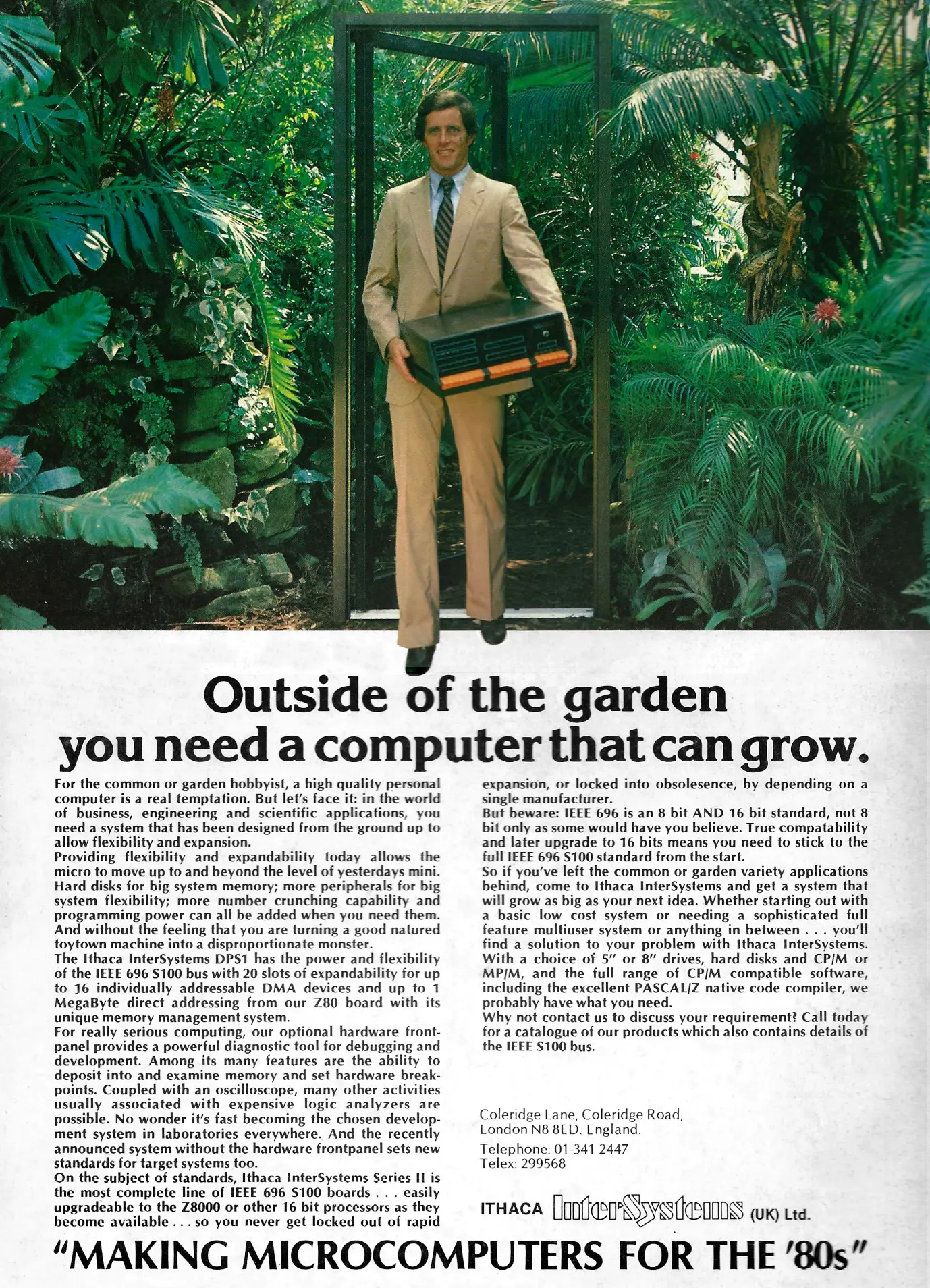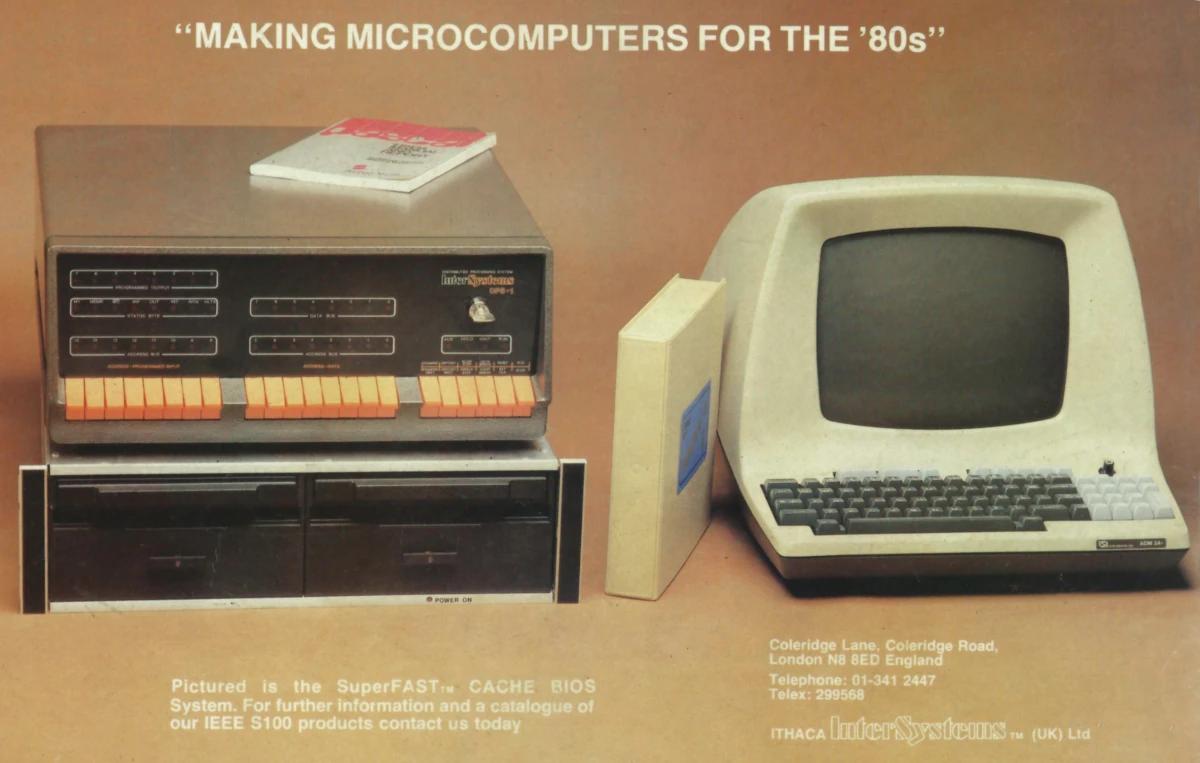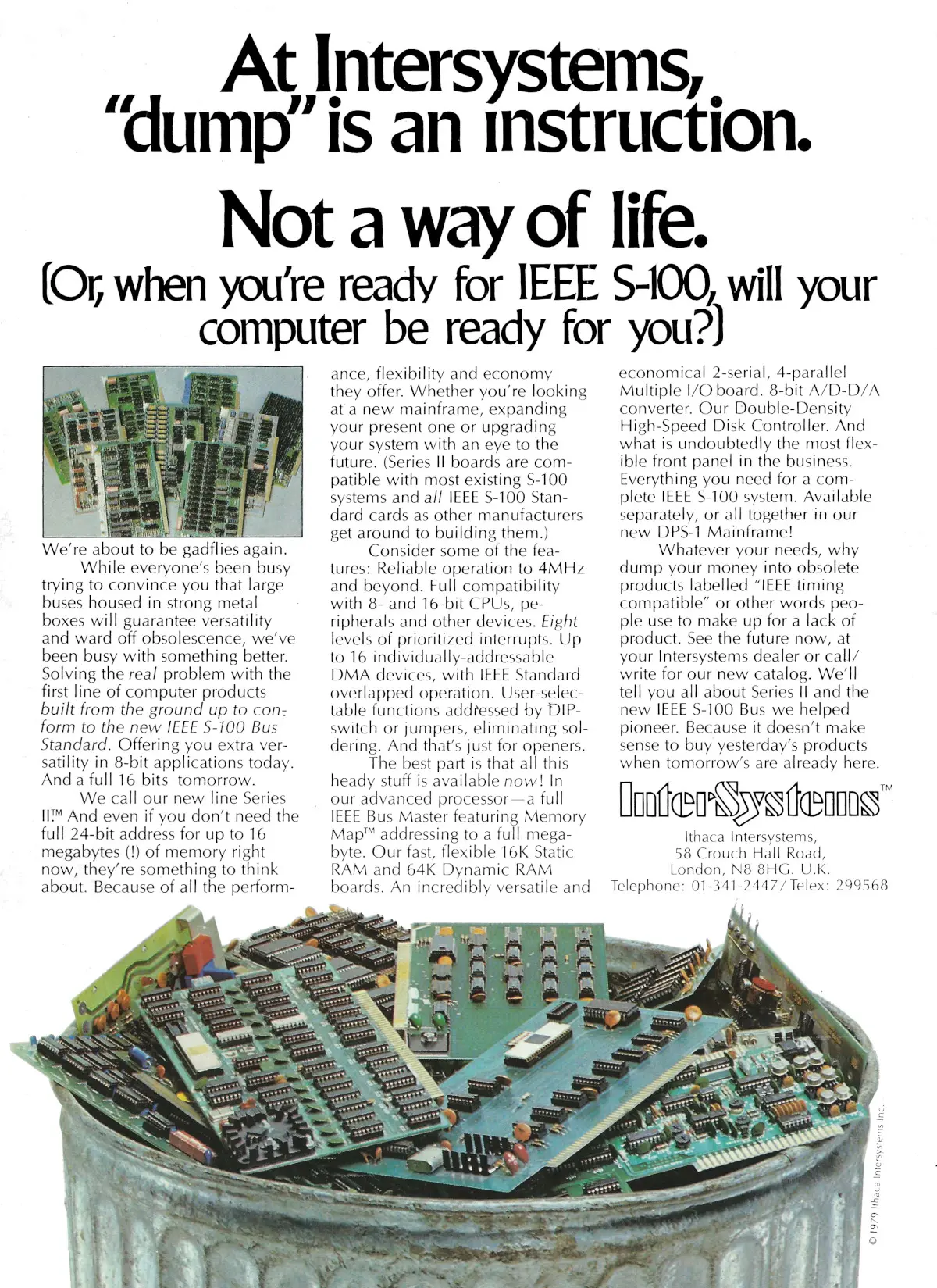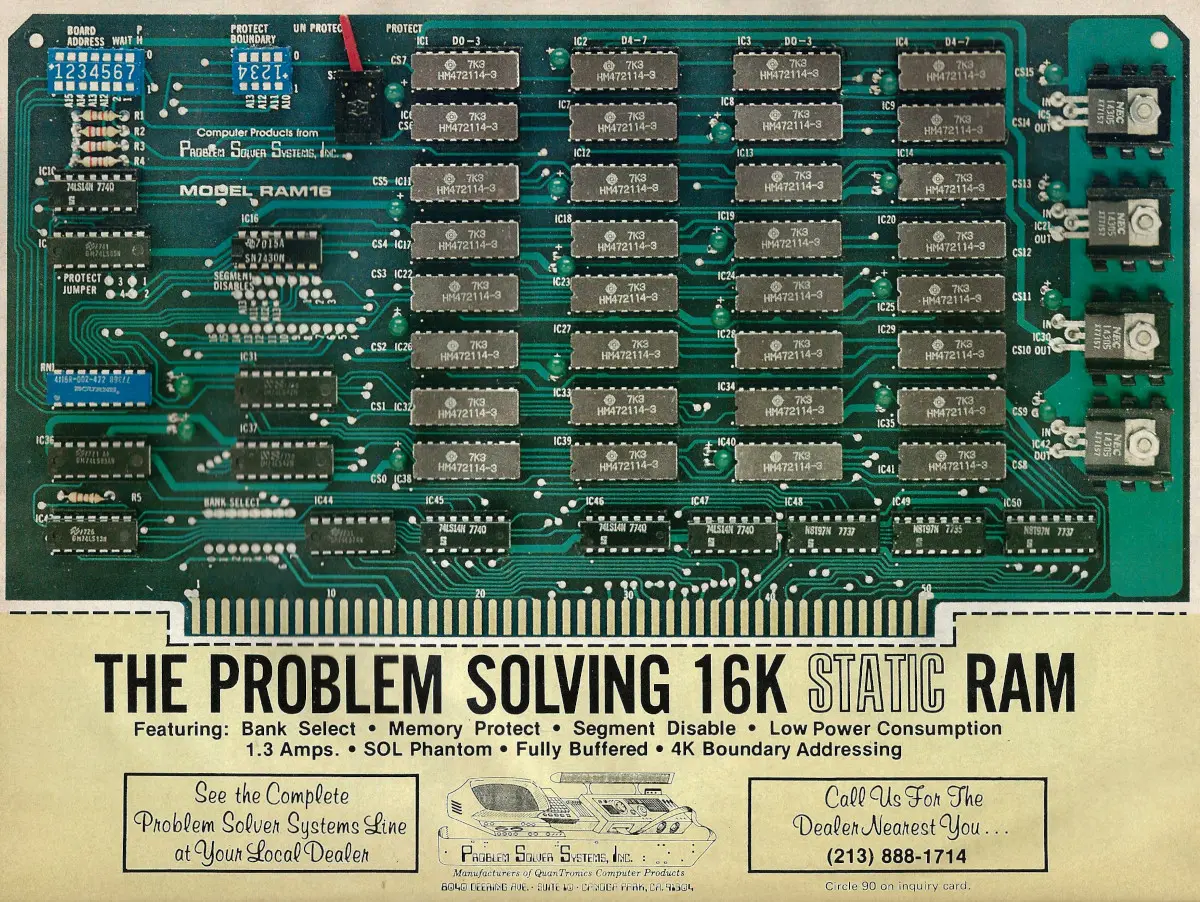Ithaca InterSystems Advert - June 1981
From Personal Computer World

Outside of the garden you need a computer that can grow - Ithaca InterSystems DPS-1
This adverts shows one of many ageing Zilog Z80-based machines of this era running on an S-100 bus: the DPS-1, from Ithaca InterSystems, founded in Ithaca, New York, in 1977.
The company was originally known as Ithaca Audio, in a nod to founder Steve Edelman's college job selling audio equipment to his fellow students[1]. Its first product was an S-100 8K static RAM board.
The company's DPS-1 was aimed at the scientific and laboratory market, with no fewer than 20 I/O slots, plus the ability to interface to an oscilloscope, but was launched in the era of the Commodore PET and Apple II - the form-factor of which had quickly become the de-facto for mainstream business and education.
However, it gave nod to the near future as it also provided for 16-bit upgradeability, via a Zilog Z8000 add-on board, although none of this stopped it from looking like a big cassette or CD case.

A back-page advert in Practical Computing's November 1981 issue showing a close-up of the DPS1, along with a SuperFAST CACHE BIOS system and a terminal
It was, however, notable for being the last computer released that had front-panel switches as its interface, as well as being one of the first "home", or at least small, computers that would run Unix[2].
Ithaca InterSystems had established a London office by October 1979 and had appointed Newbear Computing Store in Newbury as its main UK distributor, whilst also appointing Jim Wood, formerly of Comp Shop, as its European sales manager.
The DPS-1 that Newbear was selling was considered very well designed and well-built and went up against Cromemco and North Star machines, all of which were similarly based on the S-100, or "Standard 100" bus - so-called thanks to its 100-pin edge connectors.

An Ithaca InterSystems advert featuring a range of the company's S-100 boards, but based on the in-progress IEEE 696-1983 S-100 standard. From Practical Computing, August 1980
S-100 - originally known as the Altair bus - had been around since 1975, but was still in the process of being ratified as an IEEE standard in 1979, which it finally achieved in 1983, becoming known as IEEE 696-1983.
Ithaca played its part in that process as Kells Elmquist, the company's chief engineer, was one of the prime architects of the IEEE S-100 bus specification, along with Howard Fullmer, David Gustavson, and George Morrow - who would later found the company Morrow Designs.
In 1979, the DPS1 retailed for £695 (£4,990 in 2025 money) or £2,799 (£20,100) in the form of a complete Pascal development system[3].

A 16K static RAM S-100 plug-in memory card, built by Problem Solver Systems, Inc. Each of the 32 Hitachi HM472114 chips on the board stored 1024 x 4 bits, i.e. 512 bytes. From Byte, January 1978
After the IBM PC was launched in 1981 - and as the performance of IBM PCs improved - S-100 micros were pushed towards more powerful multi-user and specialist applications.
Despite the competition, S-100 systems did however remain in the market until the early 90s, with the IEEE retiring the S-100 bus standard in June 1994[4].
Date created: 01 July 2012
Last updated: 17 July 2025
Hint: use left and right cursor keys to navigate between adverts.
Sources
Text and otherwise-uncredited photos © nosher.net 2025. Dollar/GBP conversions, where used, assume $1.50 to £1. "Now" prices are calculated dynamically using average RPI per year.